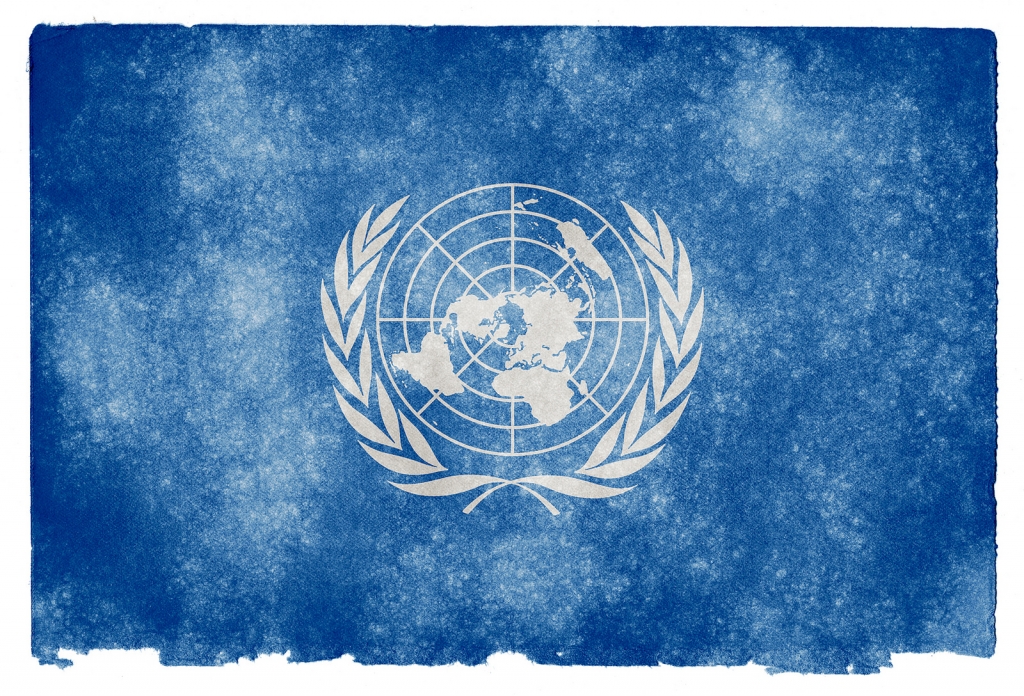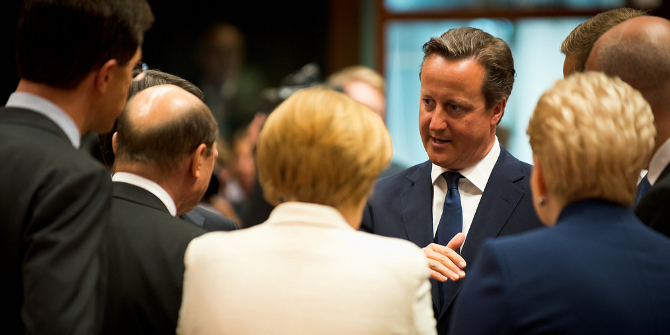 In his recent article on the Responsibility to Protect – a political commitment to prevent atrocities – Matt Sleat argued it would be wrong to assess its success solely on how far it conforms to moral principles, while ignoring the difficult political circumstances in which relevant decisions are made. Here, Graham Harrison writes that conceptualising the Responsibility to Protect politically is not enough; instead, we must also be able to analyse it as a political practice.
In his recent article on the Responsibility to Protect – a political commitment to prevent atrocities – Matt Sleat argued it would be wrong to assess its success solely on how far it conforms to moral principles, while ignoring the difficult political circumstances in which relevant decisions are made. Here, Graham Harrison writes that conceptualising the Responsibility to Protect politically is not enough; instead, we must also be able to analyse it as a political practice.
Matt Sleat argues that we need to understand the Responsibility to Protect (RtoP) politically, from beginning to end. RtoP is, he argues, a project partially realised in an imperfect world. Future actions will therefore require difficult choices, compromises, and adjustments because that is what politics is, and RtoP is intrinsically political. Like all political endeavours – no matter how normatively appealing – it will never be perfected and sometimes it will fail. Dr Sleat frames his point of view within a Realist tradition that derives from Bernard Williams. But, how far does this take us?
Drawing from Bernard Williams, the first political question is ‘how do we secure the conditions of stability and peace that enable political discourse and practice?’, Dr Sleat’s initial answer is a Hobbesian one: ‘We commit ourselves to the authority of a sovereign state.’ RtoP, then, looks like a global project to create ‘responsible Leviathans’: nation-states that can ensure stability and an absence of mass violence. The project, Dr Sleat argues, does not require idealistic normative thinking but rather a basic concern to do away with chaos and atrocity – a concern that drives a series of political (read: messy and interest-laden) practices of intervention.
I agree with this line of analysis, but the argument itself is open to a response from those who strongly advocate RtoP as a fundamentally moral project or as a project that should be measured by its declared moral ideals. This is that the heavy emphasis on normative ideals does not need to be taken too seriously, philosophically speaking, because these norms actually mainly serve as a mobilisation device. There is a lot of discussion in the core work on RtoP of ‘norm entrepreneurs’ and norm ‘cascades’ in which the force of RtoP morality is largely a political resource to convince others and generate agreement. In other words, the idealistic tone in some normative advocacy of RtoP is mainly political: a discourse to shape political decision-making.
At a greater level of detail, one can see some sense in this. For example, although some political theorists make moral arguments in favour of RtoP, UN reports on RtoP or the text on the Global Center for the Responsibility to Protect generate similar norms but in ways that are banal and cheery in equal measure. Overall, at one end of the spectrum we have the idealistic moralism that Dr Sleat focuses on, in the middle those who translate between theory and practice, and at the other end institutional advocacy rhetoric. The closer we get to the latter end of the spectrum, the more we are dealing with political advocacy, institutional-building, and politicking. RtoP’s ‘political moralism’ is doing the work of both the ideal theorist and the professional advocate.
In a sense, Dr Sleat’s theoretically-derived insistence on taking politics more seriously as a discrete and bounded arena of human practice which is interest-laden, imperfect, and complex is only a half-argument for Realism. This is so because, having made this point, there is a hesitation, as if just on the precipice of finding ways to study the actual politics of RtoP. To put it bluntly: if the argument is that we should treat RtoP politically, shouldn’t we start to do so?
Perhaps we need a second political question: What is to be done? If, following Williams, in the beginning was the deed, then the content of politics is not only in securing of its basic conditions but in its practice. We may not be able to escape the first political question but nor can we have any politics without this – or another – second question.
Like the first question, ‘what is to be done?’ is not so much a question that needs a direct and comprehensive answer. In keeping with the way Williams articulates the first question, it is more akin to an issue. It is as insistent and inescapable as the first question because any conditions within which political can happen only makes sense when politics does happen. In regards to RtoP, this means looking at the distinct and specific issues of political practice that occur in a non-idealistic project to engineer responsible Leviathans. To my mind, there are four cardinal issues.
In either ‘hard’ (military) or ‘soft’ (institution-building) forms, RtoP is a practice of intervention that derives from a ‘thin’ global-universal project. As such, all RtoP projects have to reconcile the global-generic with the local-specific. Each project might do so through precautionary reconnaissance, or simply through ‘on the ground’ encounters. There is no formula here. Balances and judgments need to be struck. More detailed knowledge of zones of intervention will likely repay prudence and modest aims within the context of ‘complex emergencies’.
The kinds of violence that RtoP concerns itself with are large-scale: mass atrocities. These kinds of violence are not ‘chaos’ but rather social projects. They require sustained resource and political will. They will be based in their own political economies of plunder, enrichment, redistribution, and forced labour. More deeply, they might be in part the product of prevailing patterns of accumulation and social relations of production that have had deleterious social effects.
Sovereignty is not only a concept; it can be understood as a specific form of political activity that exists within the interstices between national self-determination, elite control of the state apparatus, and the global system of intergovernmentalism. Within this zone, a great deal of contestation takes place: assertions of national autonomy, the intergovernmental language of partnership, more forceful global articulations of discipline and intervention, and a range of opaque political traffic that concerns investment, intelligence, and security. RtoP has to work within this zone of sovereign practice.
Finally, RtoP is either a coercive project or it can only realise itself as a result of its coercive possibilities. Coercion might involve large-scale military intervention, or it might involve international judicial procedures connected to the International Criminal Court. It might involve protection or combat. It might involve support for one military agent over others, a support that might take different forms.
One might dub these four issues as follows: embedding, materiality, sovereign practice, and coercion. Together they offer us avenues into the investigation of RtoP as a political practice. They move us beyond a concern to conceptualise RtoP politically to a concern to analyse RtoP politically. It is only by making this move that the promise of a fulsome political analysis can take place.
__
 Graham Harrison is Professor in the Department of Politics at the University of Sheffield. For a full list of publications see here.
Graham Harrison is Professor in the Department of Politics at the University of Sheffield. For a full list of publications see here.








